
Market Trends and Consumer Insights for Bike Launches
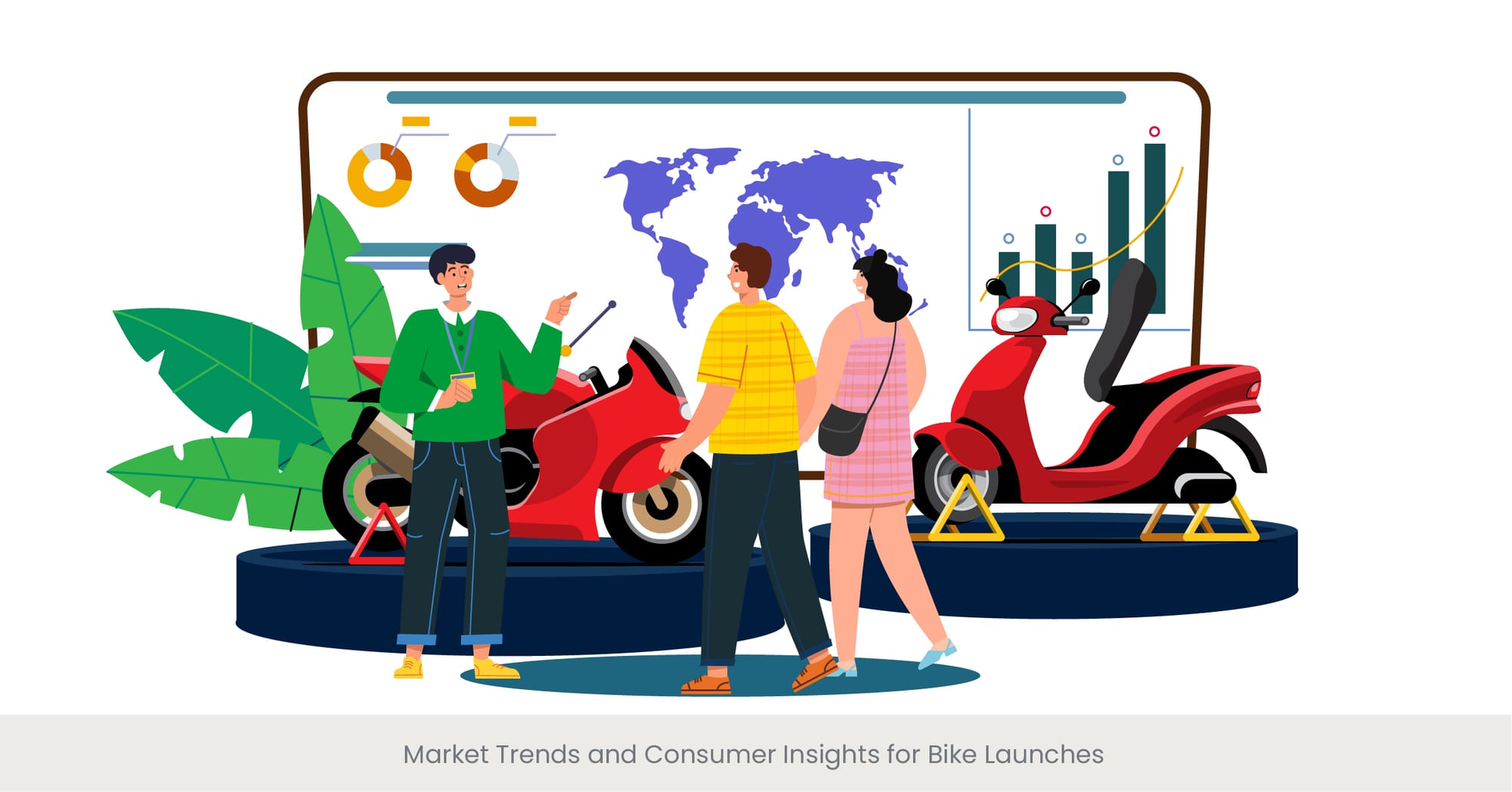
The Pulse of the Cycling World: Riding the Wave of Market Trends
Understanding the current market trends and consumer insights is crucial for any bike launch. As more people are increasingly seek out sustainable and healthy modes of transport, the demand for bicycles, including mountain bikes, road bikes, and especially electric bikes, has surged. This rise reflects a growing awareness of environmental issues and a shift towards more active lifestyles. Tailoring bike launches to these insights not only captures the interest of potential buyers but also positions the brand as a forward-thinking player in the industry.
From Tradition to Innovation: The Evolution of Consumer Preferences
The history of biking, from the start of its humble beginnings to the present day, has been marked by continuous innovation, progress and adaptation. Consumers today are looking for more than just a means of transport; they seek bikes that align with their lifestyle, values, and aspirations. The popularity of electric bikes (e-bikes) underscores this trend, with advancements in battery technology and design making them more accessible and appealing than ever before. Brands that highlight these innovations in their presentations connect more deeply with their audience.
Showcasing Success: Examples of Market Resonance
Real-world examples of successful bike launches often share a common thread: they effectively tap into the current consumer mindset. For instance, the launch of a new electric bike model that emphasizes its eco-friendly features and cutting-edge design can resonate with environmentally conscious consumers. Similarly, mountain bike launches that focus on ruggedness and adventure appeal to those seeking thrill and escapism. These case studies demonstrate the importance of aligning product highlights with consumer desires.
Solidifying Claims with Data
To lend credibility to the insights and trends highlighted in a mountain bike launch presentation, presenting data and statistics is essential. Studies showing an increase in bike usage in urban areas, consumer surveys indicating a preference for eco-friendly transport options, and sales figures for electric bikes can all validate the strategic direction of the mountain bike launch presentation. By referencing reputable sources such as industry reports and consumer research, brands can substantiate their market positioning and product development choices.
Launch presentation slides should be compelling, visually engaging, and aligned with the event's goals. Each slide should highlight key product features, benefits, and market impact, designed to drive attention and action. Utilizing high-quality visuals and infographics can keep the audience focused while maintaining the narrative flow of the presentation.
Highlighting Innovation and Design Features
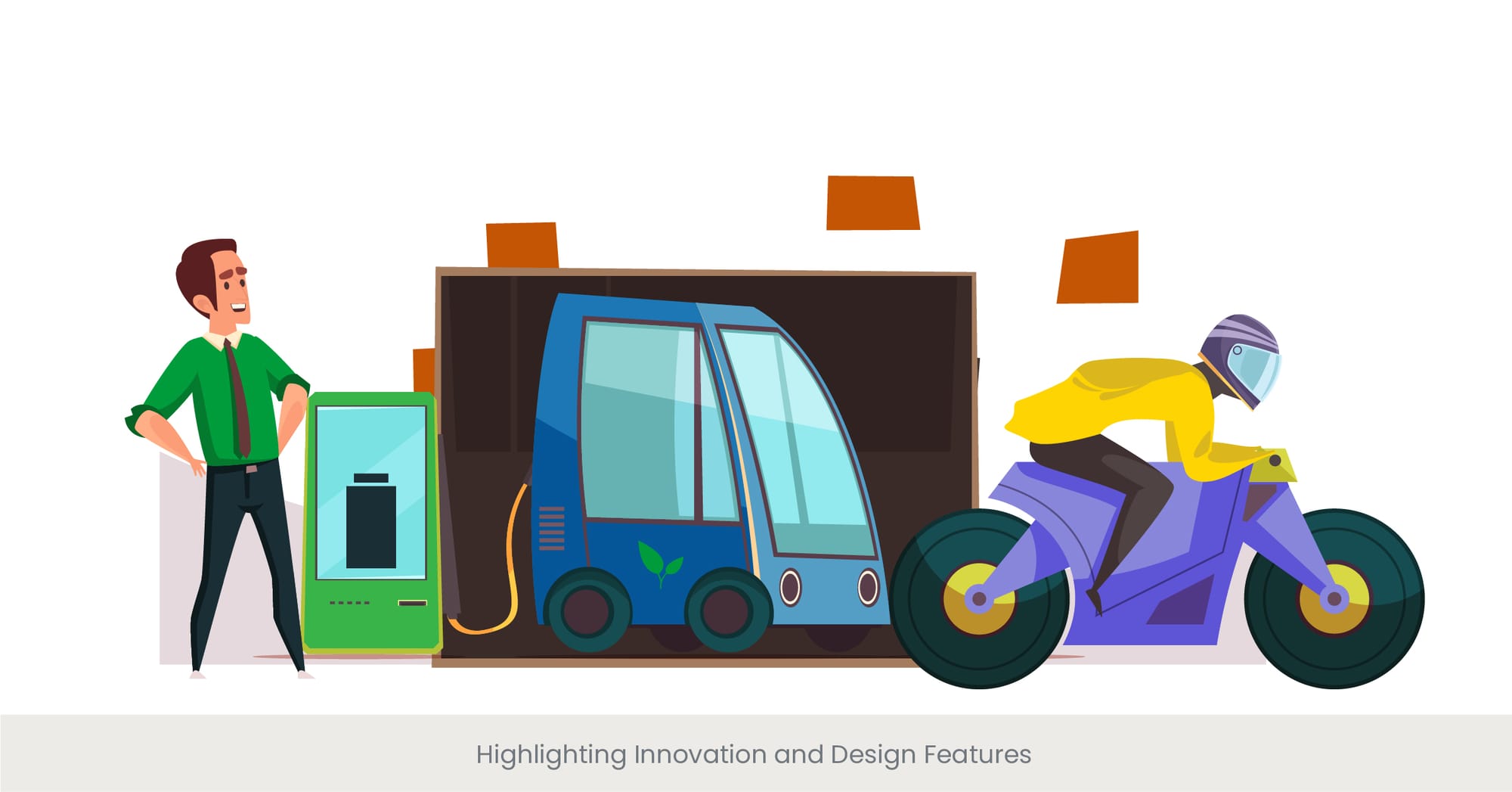
Crafting the Future: The Art of Bike Design
In the fast- world of cycling, innovation and design are not just about aesthetics; they're about pushing boundaries and challenging the status quo. A bike launch presentation that effectively highlights these features can captivate the audience, setting the stage for a memorable introduction. Manufacturers are increasingly focusing on creating bikes that are lighter, faster, and more comfortable, while also incorporating cutting-edge technology to enhance and customize the riding experience. From aerodynamic frames for road bikes to suspension systems for mountain bikes and integrated tech for e-bikes, each design element is a testament to the brand's commitment to progress.
The Backbone of Cycling: Evolution of Bike Technology
The journey of bike design is a fascinating tale of innovation. From the early days of simple, human-powered machines to today's high-tech e-bikes, the evolution of bicycle technology reflects a relentless pursuit of improvement. Key milestones in this journey include the introduction of carbon fiber frames, electronic shifting systems, and regenerative braking in e-bikes. These advancements not only improve performance but also make cycling more accessible and enjoyable for a broader audience. By diving deep into the background of these innovations during a bike launch, brands can showcase their dedication to pushing the envelope.
Event showcase presentations are pivotal in displaying a product or service in its best light during an event. These presentations should highlight key aspects of the product or service through immersive visuals and engaging stories. A dynamic presentation can leave a lasting impression, influencing customer decisions and increasing event success.
Riding the Wave of Innovation: Case Studies and Examples
Real-world examples serve as powerful illustrations of how innovation and design can revolutionize the biking experience. Consider the launch of a mountain bike equipped with a state-of-the-art suspension system that allows for unparalleled control and comfort on rough terrain. Or an electric bike that features an intuitive, integrated navigation system to enhance urban commuting. These examples highlight the practical applications of design innovations, showcasing the tangible benefits they bring to riders.
Validation Through Expertise and Data
The impact of design and technological innovations is best validated by expert opinions and data. Reviews from leading cycling publications, testimonials from professional riders, and performance data can all contribute to a compelling narrative. For instance, citing a study that demonstrates how a particular frame geometry can reduce drag and increase speed can be persuasive. Similarly, highlighting awards or accolades received for design excellence reinforces the brand's reputation as a leader in innovation.
Organizing Community Rides and Events
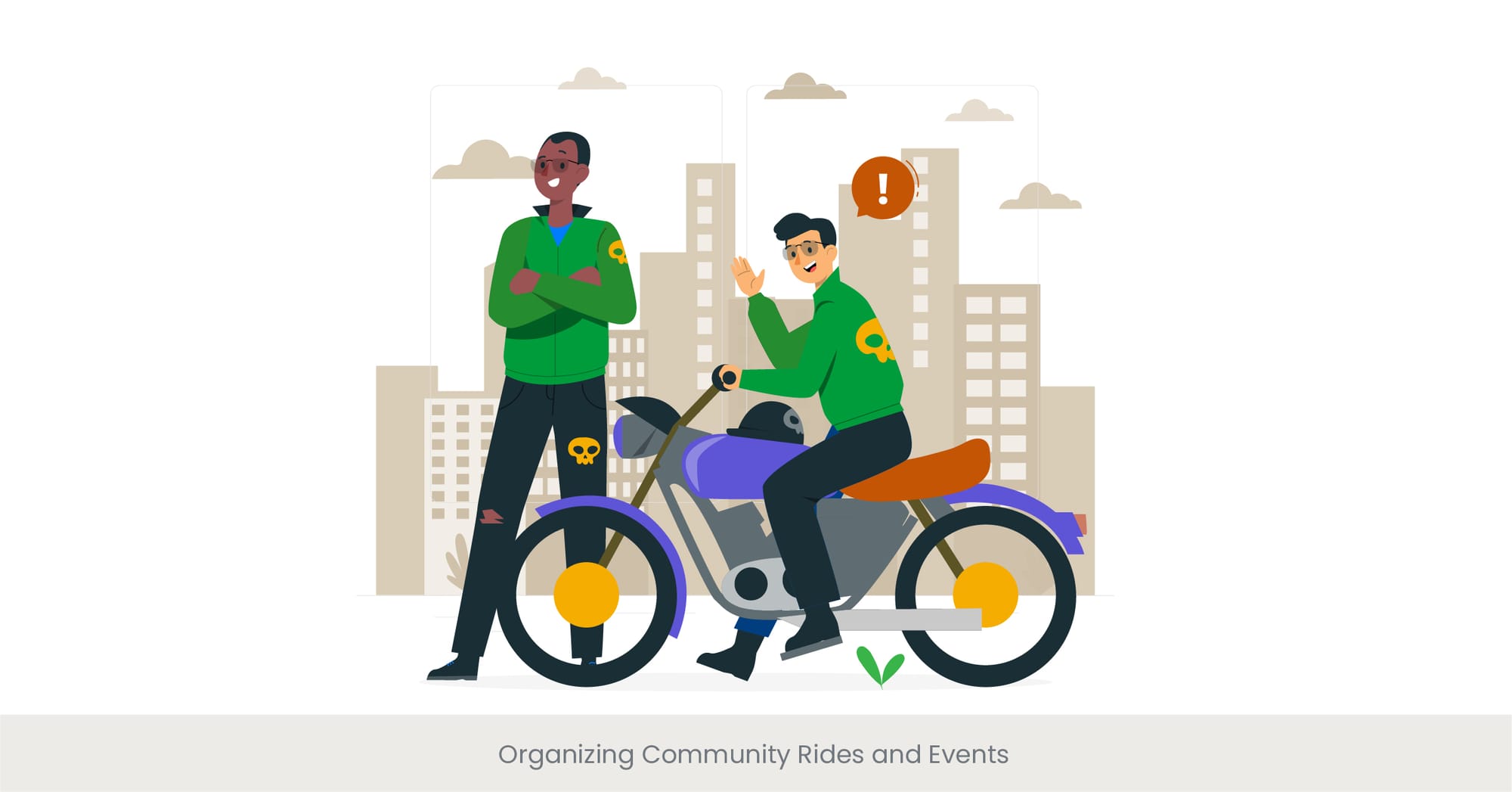
Uniting Cyclists: The Power of Community Events
Community rides and events play a pivotal role in the cycling world, serving as a bridge that connects enthusiasts, beginners, and professionals. These gatherings are not just about showcasing new bikes but about creating a shared experience and place that celebrates the joy of cycling. By incorporating community events into bike launch strategies, brands can start to cultivate a sense of belonging and enthusiasm that transcends the product itself. From scenic group rides to competitive events and casual meet-ups, these activities offer a unique opportunity to engage with the community, gather feedback, and build lasting relationships.
The Historical Wheel: Evolution of Community Cycling Events
The tradition of community cycling events has deep roots, evolving from simple group rides to elaborate music festivals that attract cyclists from around the globe. This evolution reflects a growing recognition of the social and cultural significance of cycling. Historical events, such as the Tour de France, have inspired countless local and international cycling events, each with its own unique flavor, style and purpose. By understanding this history, brands can craft events that resonate with the cycling community's rich traditions while introducing innovative elements that reflect modern trends.
Spotlight on Success: Case Studies of Impactful Events
Real-world examples of successful community rides and events offer valuable insights into what makes these gatherings resonate with participants. Take, for example, a bike brand that launched a new model by organizing a multi-day ride across varied terrain, showcasing the bike's versatility and performance. Another brand might host a family-friendly event that emphasizes the fun and inclusivity of cycling, attracting a diverse group of participants. These examples demonstrate the potential of community events to create memorable experiences that highlight the bike's features and the brand's values.
Building Credibility Through Collaboration
Collaborating with local cycling clubs, event organizers, and other stakeholders can greatly enhance the impact of community events. These partnerships not only broaden the event's reach but also lend credibility and depth to the experience. By leveraging the expertise and networks of these groups, brands can create events that are more engaging, accessible, and successful. Additionally, feedback and testimonials from participants and partners can serve as powerful endorsements, further validating the brand and its products.
Leveraging Eco-Friendly and Health Conscious Angles

Pedaling Towards a Greener Future: The Eco-Friendly Appeal
In today's environmentally conscious society, leveraging the eco-friendly aspects of biking can significantly enhance the appeal of a bike launch. Bicycles stand as a beacon of sustainable transport, offering a clean alternative to fossil fuel-dependent vehicles. Highlighting this eco-friendly angle not only aligns with the growing societal push towards sustainability but also resonates with a consumer base that values environmental responsibility. By focusing on the bicycle's role in reducing carbon footprints, conserving energy, and mitigating urban congestion, brands can position their products as not just modes of transport, but as tools for environmental change.
The Health Revolution on Two Wheels
Beyond environmental benefits, cycling is renowned for its health advantages, offering a holistic approach to physical and mental well-being. Emphasizing the health-conscious aspects of biking during a launch can tap into the widespread interest in fitness and wellness. Regular biking contributes to cardiovascular health, muscle strength, weight management, and stress reduction. Presenting bikes as a key component of a healthy lifestyle appeals to a broad audience, from hardcore fitness enthusiasts to individuals looking for enjoyable ways to stay active.
Inspiring Change: Real-World Impact Stories
The true power of eco-friendly and health-conscious bicycle messaging is brought to life through real-world impact stories and case studies. For instance, highlighting a city that has seen a significant reduction in carbon emissions and improved public health statistics since increasing bike infrastructure can be compelling. Similarly, sharing testimonials from individuals who feel they have transformed their health through cycling offers personal insights into the benefits of biking. These stories not only humanize the message but also provide tangible proof of the positive effects of cycling.
Supporting Data: The Foundation of a Strong Message
Backing up eco-friendly and health-conscious claims with solid data is essential for credibility. References to studies showing the environmental benefits of increased bike usage, such as lower pollution levels and reduced traffic congestion, strengthen the environmental argument. Similarly, citing research on the health benefits of regular cycling, including decreased risks of chronic diseases and improved mental health, reinforces the message. This data provides a compelling rationale for choosing biking as a sustainable and healthy lifestyle choice.
Engaging with Cycling Clubs and Communities
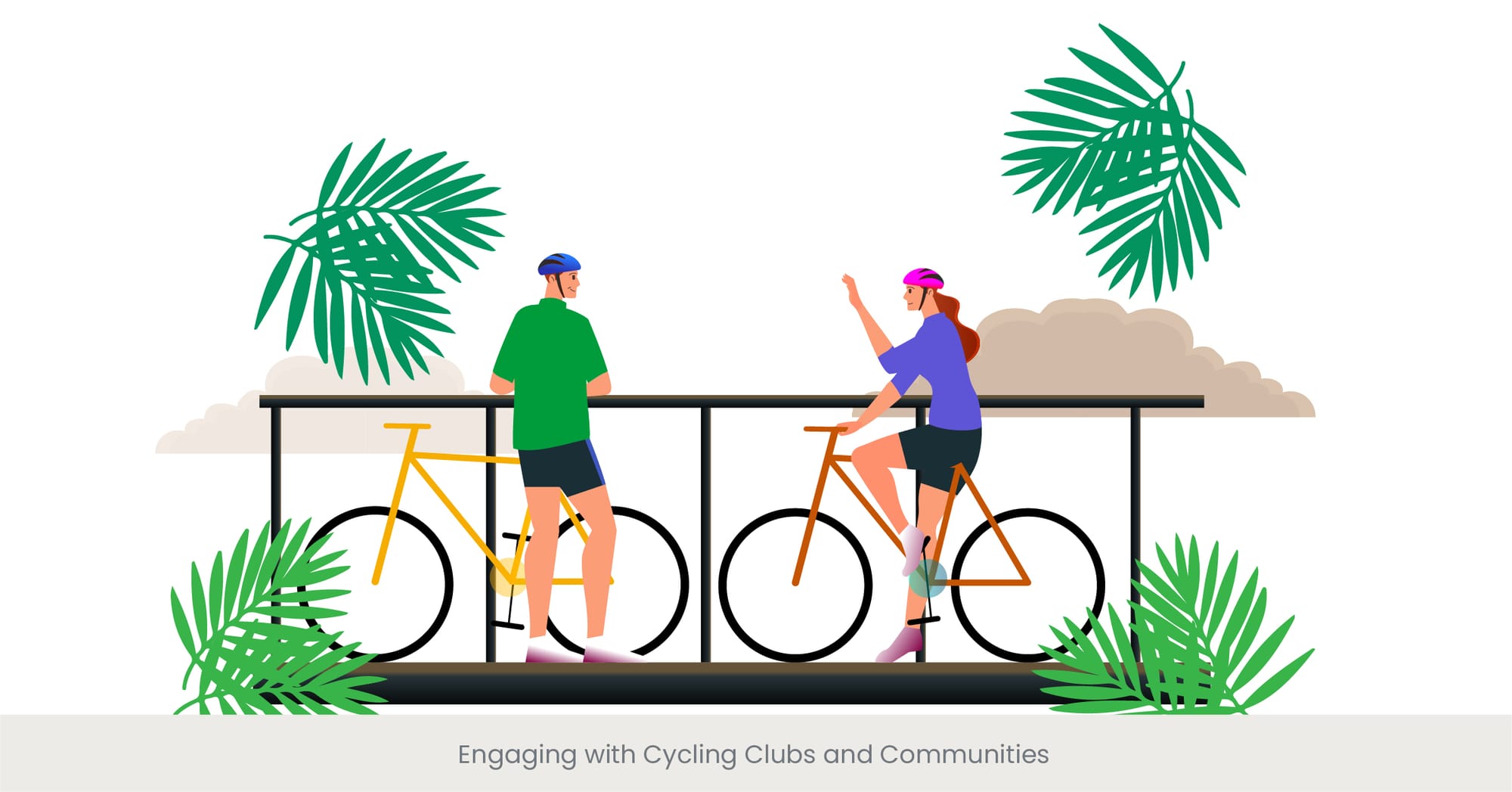
Fostering Unity: The Heartbeat of Cycling Engagement
Engagement with cycling clubs and communities forms the cornerstone of a vibrant cycling culture. These groups often act as the lifeblood of the cycling world, offering support, camaraderie, and shared enthusiasm for all things biking. For brands, tapping into this network is essential during bike launches, as it provides a direct channel to the most passionate and influential cyclists. Creating partnerships and fostering relationships with these clubs and communities can amplify the impact of a launch, turning it into a communal celebration of cycling innovation.
Riding Through History: The Evolution of Cycling Communities
The cycling community, with its rich tapestry of clubs, groups, and organizations, has evolved significantly over time. What started as small gatherings of cycling enthusiasts has blossomed into a worldwide network of clubs that cater to every style and discipline, from road racing to mountain biking and everything in between. Understanding this evolution helps brands appreciate the diversity and richness present of the cycling community. It underscores the importance of adopting a tailored approach to engagement, recognizing the unique identity and interests of each group.
Spotlight on Synergy: Success Stories of Community Collaboration
Successful collaborations between bike brands and cycling communities often lead to win-win scenarios, where both parties benefit from increased visibility, enhanced engagement, and mutual growth. For instance, a bicycle brand that sponsors local cycling events or clubs can gain direct access to an engaged audience, while the community benefits from financial support, exposure, and access to the latest biking technology. Highlighting such collaborations during a bike launch can demonstrate the brand's commitment to supporting the cycling ecosystem, enhancing its reputation and appeal within the community.
The Power of Partnerships: Strengthening Ties with Data and Testimonials
Solidifying the relationship between brands and cycling communities often requires more than just financial support; it's about building trust and demonstrating mutual benefits. Incorporating data and testimonials from previous successful partnerships can be a fast and powerful way to achieve this. Sharing metrics on increased event participation rates, community growth, or enhanced cycling activity due to brand involvement can provide tangible evidence of the partnership's value. Additionally, testimonials from community leaders or members about the positive impact of the collaboration lend authenticity and credibility, further strengthening the brand's position within the cycling world.
Cross-promotions with Outdoor and Fitness Brands
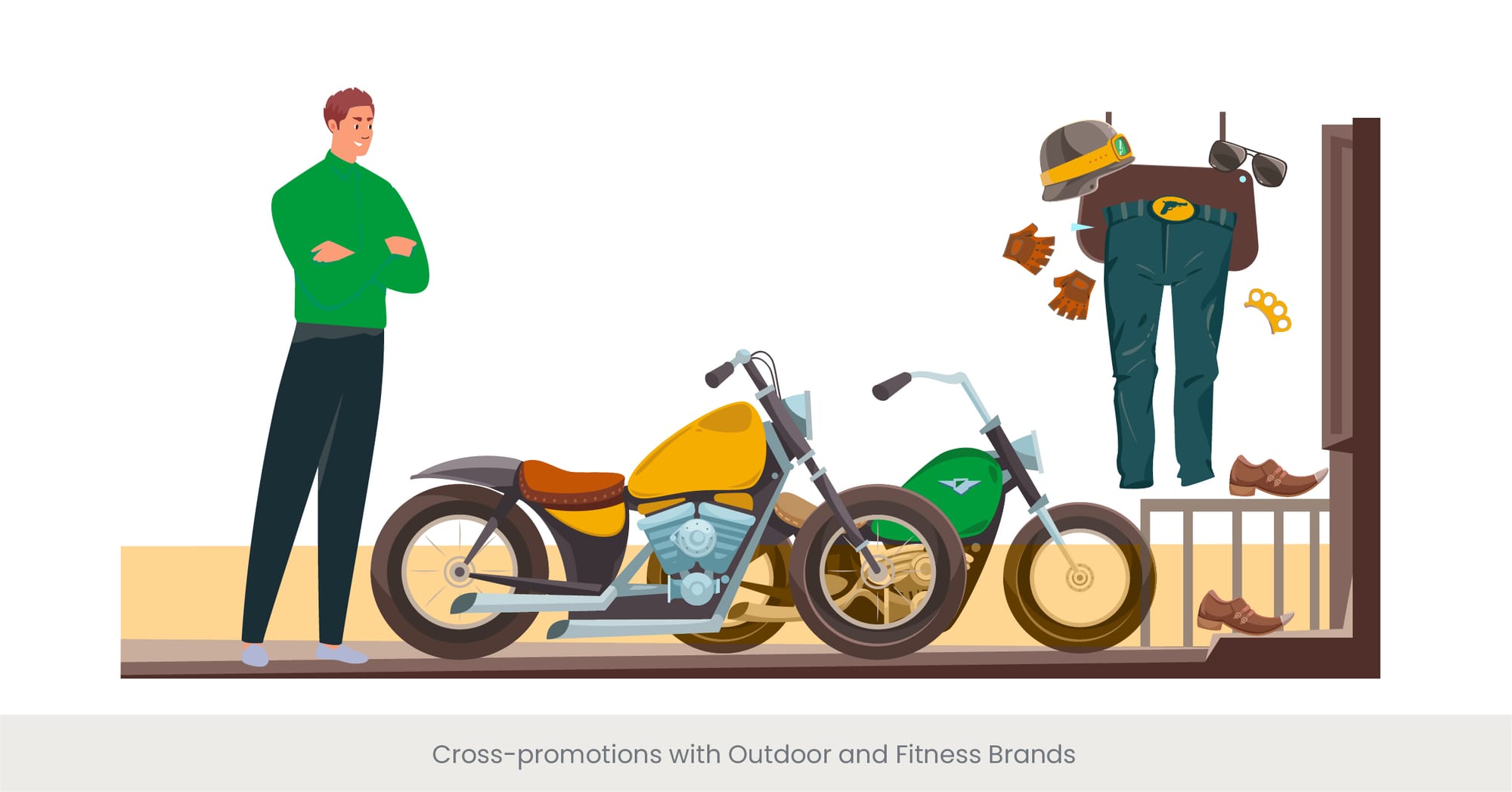
Synergizing Passions: The Strategic Alliance
Cross-promotion with outdoor and fitness brands presents a unique opportunity to amplify the impact of bike launches. These collaborations allow for a fusion of communities with shared values and interests, particularly in health, adventure, and environmental stewardship. By aligning with brands in the outdoor and fitness sectors, bike companies can extend their reach, tapping into new audiences while offering enriched, holistic experiences. This strategy leverages the complementary nature of biking with other outdoor activities, creating a synergy that benefits all involved parties.
The Convergence of Interests: A Historical Perspective
The intersection of cycling with outdoor and fitness activities has deep historical roots, reflecting a long-standing tradition of exploring and enjoying the natural world. Over time, this convergence has only grown stronger, with many people today embracing cycling both as a form of exercise and as a fun and safe way to experience the outdoors. This historical overlap underscores the natural fit for cross-promotions, suggesting that such collaborations are not just strategic but inherently aligned with the interests and lifestyles of target audiences.
Celebrated Collaborations: Highlighting Success
Examples of successful cross-promotions abound, illustrating the potential of these partnerships to create buzz and drive engagement. For instance, a bike brand might choose to team up with a fitness apparel company to offer co-branded gear, encouraging riders to fully immerse themselves in the cycling lifestyle. Another example could involve e bike, partnering with an outdoor equipment brand to create bundled offers that equip cyclists for adventure rides. These collaborations not only enhance the product offering but also create a comprehensive lifestyle brand experience that resonates deeply with consumers.
Validating Success Through Data and Feedback
The effectiveness of cross-promotional strategies can be compellingly demonstrated through data and consumer feedback. Metrics such as increased sales, heightened brand awareness, and expanded social media engagement offer concrete evidence of the collaboration's impact. Furthermore, positive feedback from consumers who find and appreciate the added value and convenience of these partnerships reinforces the benefits. Sharing this data and feedback during a bike launch can underscore the strategic foresight of cross-promotions, showcasing the brand's commitment to offering value beyond the bike itself.
Interactive Displays and Virtual Test Rides
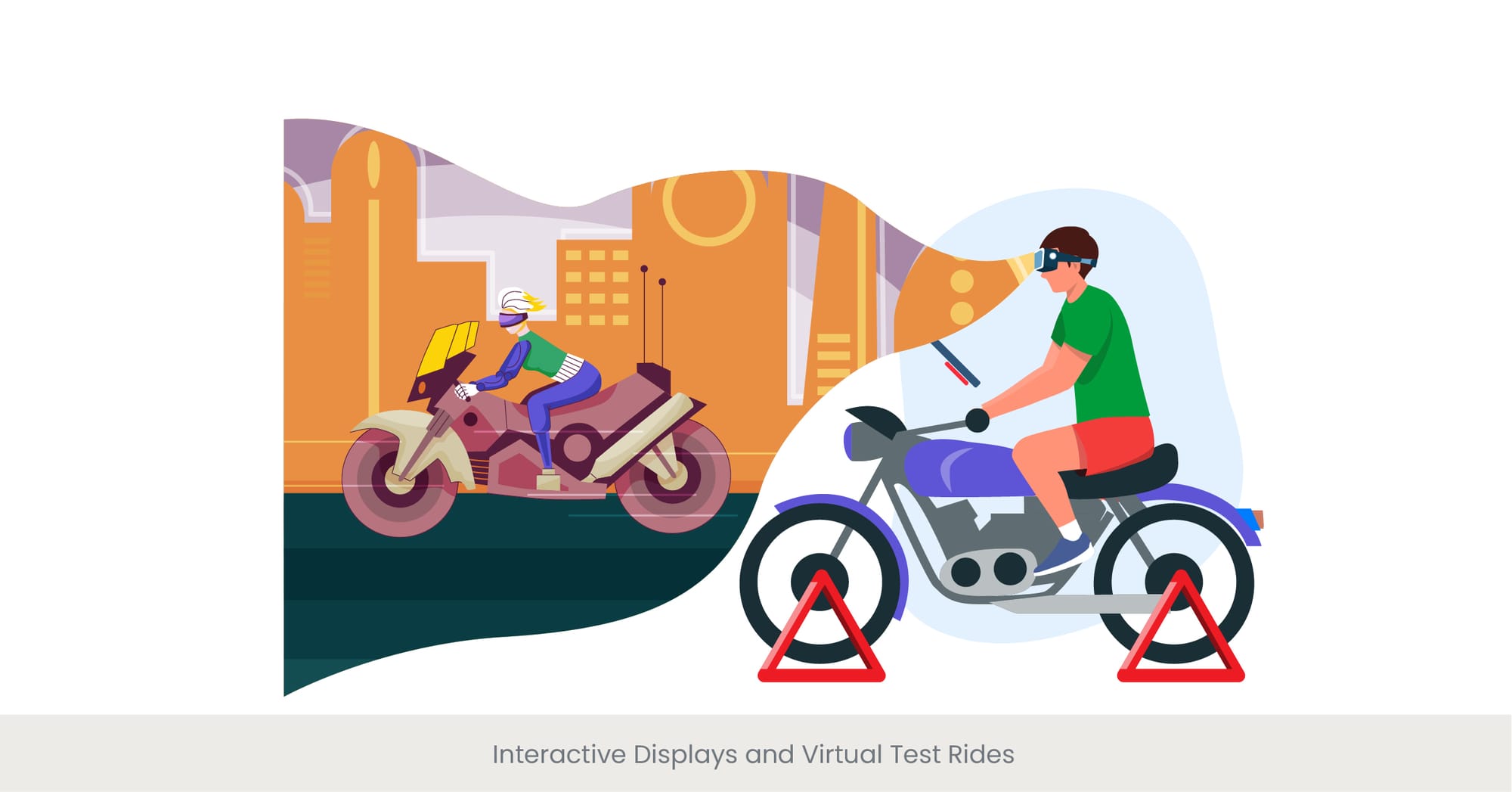
Revolutionizing the Experience: Interactive Innovation
In the age of digital transformation, interactive displays and virtual test rides are redefining the way consumers engage with bike launches. This innovative approach not only captivates potential customers but also offers them a unique, immersive experience that goes beyond traditional sales tactics. By integrating cutting-edge technology, such as augmented reality (AR) and virtual reality (VR), brands can simulate real-life riding experiences, allowing consumers to virtually test ride bikes in various environments. This not only highlights the bike's features and capabilities in a dynamic way but also significantly enhances customer engagement and interest.
Tracing the Digital Path: Evolution of Interactive Experiences
The journey towards incorporating interactive displays and virtual experiences in bike launches reflects the broader trend of digitalization across industries. Initially, bike enthusiasts had to rely on physical test rides and static displays to evaluate their potential purchases. However, as technology evolved, so did the opportunities open for more engaging and informative presentations. Today, virtual test rides and interactive displays offer a glimpse into the future of cycling, a place where digital and physical experiences blend seamlessly to enrich the consumer's decision-making process.
Spotlight on Virtual Success: Case Studies
Real-world examples of successful implementation of virtual test rides and interactive displays can provide valuable insights into their potential impact. For instance, a brand that launched an electric bike with an interactive display showcasing its unique features, such as battery life and eco-friendly modes, saw a significant increase in consumer interest and engagement. Another example is a mountain bike launch that included a VR test ride experience, simulating challenging trails and conditions, which allowed riders to truly feel the bike's performance. These cases illustrate the powerful role that digital experiences can play in enhancing product launches.
Product launch event presentations are crucial for creating a buzz around new products or services. A well-executed launch presentation grabs attention, conveys essential product features, and builds anticipation. These presentations should emphasize storytelling, clear visuals, and strong calls to action, effectively showcasing the brand’s innovation and value.
Backing Innovation with Data: The Proof Is in the Participation
The success of interactive and virtual experiences can be quantitatively measured through participation rates, engagement metrics, and feedback. Data showing increased time spent on interactive displays, higher numbers of virtual test rides, and positive consumer reviews serve as strong endorsements of these technologies. Furthermore, surveys indicating a higher likelihood of purchase following a virtual test ride underscore the effectiveness of these tools in converting interest into action. By presenting this data, brands can not only validate their innovative approach but also demonstrate their commitment to providing value and engagement to their customers.
Media Coverage and Influencer Partnerships
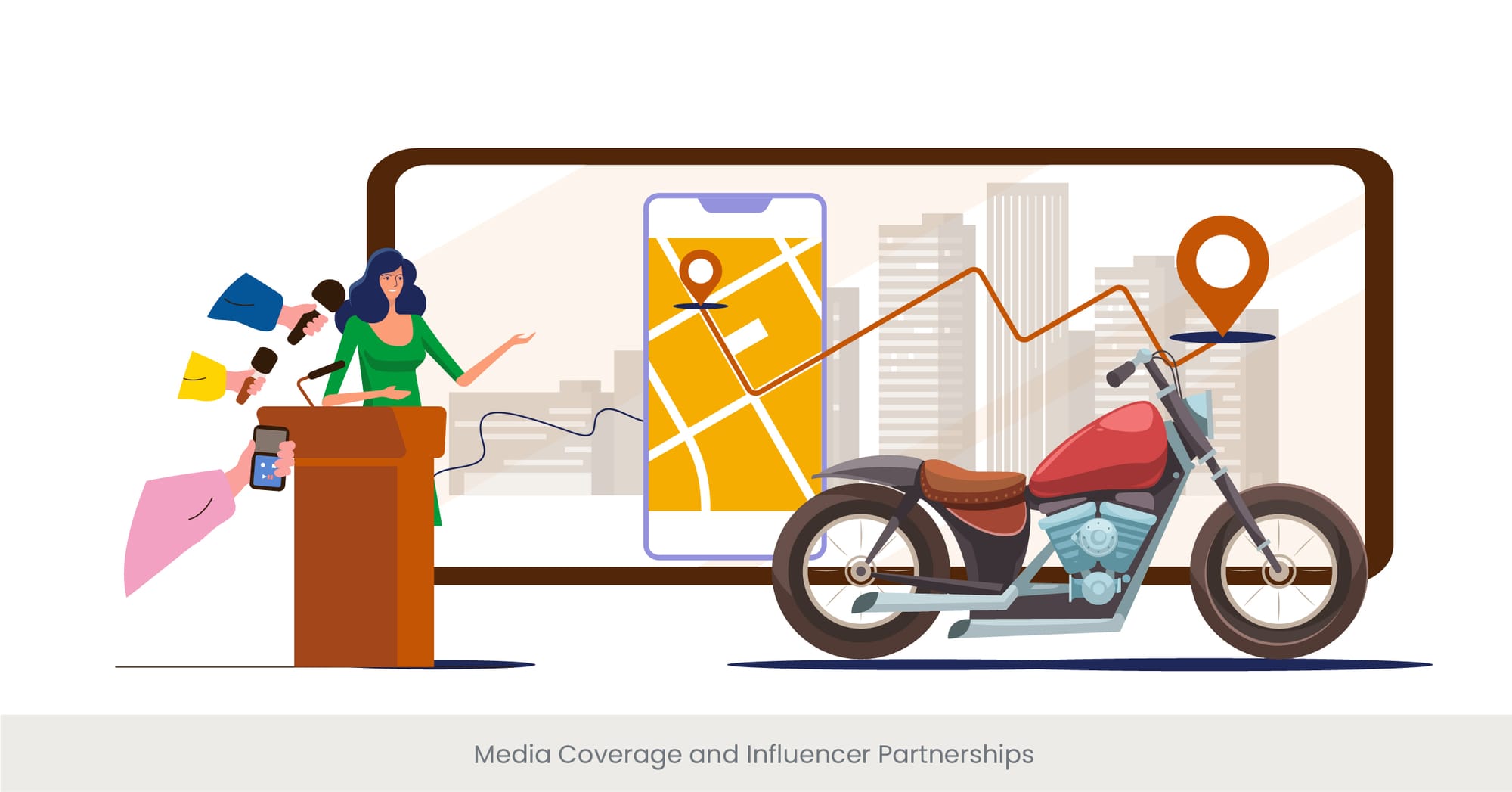
Spotlight on Success: Amplifying Reach with Media and Influencers
In the era of digital marketing, media coverage and influencer partnerships have become crucial elements in the success of bike launches. Leveraging these platforms allows brands to amplify their message, reaching a broader audience and creating buzz around new products. By engaging with journalists, bloggers, and influencers who share a passion for cycling, brands can ensure that their launches receive the attention they deserve. This approach not only enhances visibility but also lends credibility, as endorsements from respected voices in the community can significantly influence consumer perceptions and decisions.
The Evolution of Media Engagement in Cycling
The relationship between the cycling industry and the media has evolved significantly over the years. From traditional print coverage in magazines to dynamic content on social media platforms, the ways in which bike launches are publicized have expanded. Influencer marketing, in particular, has emerged as a powerful tool, with cyclists and enthusiasts turning to trusted figures for recommendations and reviews. Understanding this evolution helps brands tailor their strategies to choose the most effective channels, ensuring that their launches resonate with both core enthusiasts and a wider audience.
Showcasing Real Impact: Successful Partnerships
Illustrative examples of successful media and influencer collaborations can serve as a template and a blueprint template for future launches. For instance, a brand might partner with a well-known cycling influencer to document their experience with a new bike model, sharing it across social media platforms. Alternatively, exclusive features in leading cycling publications can introduce new innovations to avid readers eagerly awaiting the latest advancements. These partnerships not only increase awareness but also provide potential customers with valuable insights and testimonials about the bikes.
Validating Success Through Engagement Metrics
The impact of media coverage and influencer partnerships can be quantified through various metrics, for things such as increased website traffic, social media engagement, and press mentions. Analyzing these metrics provides tangible evidence of the effectiveness of these strategies. Furthermore, positive feedback and reviews from influencers and media outlets can reinforce the brand's message, contributing to a successful launch. By highlighting these achievements, brands can demonstrate the value of strategic media engagement and influencer collaborations in promoting new products.
Feedback Loops and Community Engagement Post-Launch
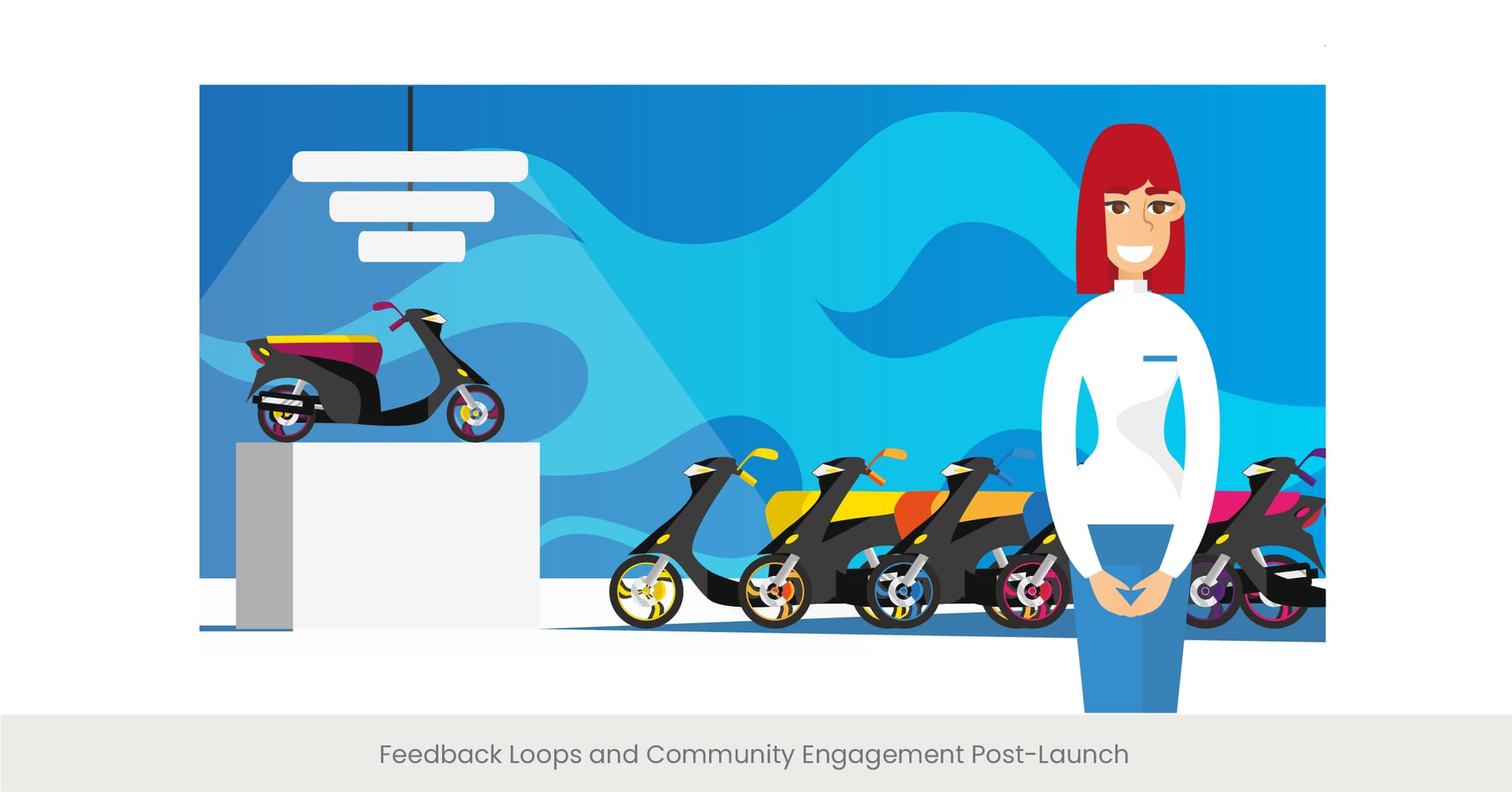
Closing the Loop: The Vital Role of Feedback in Cycling Innovations
After the excitement of a bike launch, establishing effective feedback loops and maintaining community engagement are crucial for sustained success. This continuous dialogue between the brand and its audience serves as a foundation for improvement, innovation, and loyalty. By actively soliciting, listening to, and acting on feedback, brands can demonstrate their commitment to their customers and the broader cycling community. This process not only helps in refining current products but also guides the development of future offerings, ensuring they meet the evolving needs and desires of cyclists.
The Evolution of Community Feedback Mechanisms
The mechanisms for gathering and incorporating community feedback have evolved significantly with advancements in technology and communication. From in-person focus groups and mailed surveys to online forums and social media platforms, the channels for feedback have become more diverse and accessible. This evolution has made it easier for brands to engage with a wider audience, gather insights more rapidly, and respond with agility. Understanding the historical context and current trends in feedback mechanisms allows brands to effectively tailor their engagement strategies, fostering a more responsive and customer-centric approach.
Showcasing the Cycle of Improvement: Case Studies
Real-life examples of brands that have successfully implemented feedback loops underscore the value of this engagement. For instance, a bike manufacturer might introduce a new feature or resolve a commonly reported issue based on direct customer feedback, leading to an improved version of the product. Another example could be a brand that organizes regular community rides or events, using these gatherings as opportunities to gather insights and suggestions directly from users. These case studies highlight how feedback can be a powerful driver of product and service enhancement, strengthening the bond between the brand and its community.
Quantifying Engagement: The Impact of Active Listening
The impact of establishing open and effective feedback loops and engaging with the community can be quantified through various metrics, such as customer satisfaction scores, repeat purchase rates, and community growth. Additionally, qualitative feedback through testimonials, reviews, and social media interactions offers rich insights into the community's perceptions and experiences. By sharing these metrics and stories, brands can demonstrate the tangible benefits of their engagement efforts, reinforcing the importance of a customer-centric approach in driving innovation and loyalty.
FAQs:
How do I know my mountain bike reach?
Mountain bike reach refers to the distance from the center of the bottom bracket to the center of the head tube, measured horizontally. This measurement is crucial for determining the right bike size, ensuring a comfortable and efficient riding position. You can find this information in the bike's specifications or consult with a professional for a fitting.
How did mountain biking start?
Mountain biking originated in the late 1970s in California, USA, as an offshoot of road biking. Enthusiasts looking for more adventure and challenge started riding their bikes on mountain trails, leading to the development of bikes specifically designed for off-road conditions. This marked the birth of the sport and culture of mountain biking.
How do you jump on a mountain bike?
Jumping on a mountain bike involves approaching the jump at a moderate speed, positioning your body slightly back, and as you reach the jump, using your legs to push off while pulling up on the handlebars. It's essential to practice in a safe environment and wear protective gear to improve your technique and confidence.
Who invented the mountain bike?
The invention of the mountain bike is attributed to several pioneers in the 1970s, including Gary Fisher, Joe Breeze, and Tom Ritchey, among others. These individuals modified heavy-duty cruiser bicycles to withstand the demands of off-road trails, laying the groundwork for modern mountain biking.
What are the benefits of electric bikes?
Electric bikes (e-bikes) offer numerous benefits, including making cycling accessible to more people by providing assistance on tough terrains and long distances, promoting eco-friendly transportation, and offering a fun, efficient way to commute and explore.
How can cycling contribute to environmental sustainability?
Cycling contributes to environmental sustainability by reducing reliance on fossil fuels, lowering carbon emissions, decreasing traffic congestion, and requiring less space for parking compared to cars. It represents a clean, green mode of transportation that can significantly lessen the environmental footprint of urban areas.
What makes a bike launch successful?
A successful bike launch effectively combines innovative product features, engaging presentations, community involvement, eco-friendly and health-conscious angles, and strategic partnerships with media and influencers to generate excitement and interest among potential customers.
How important are community rides in promoting new bikes?
Community rides are vital in promoting new bikes as they allow potential customers to experience the product firsthand, foster a sense of community and belonging among cyclists, and provide valuable feedback to brands for future improvements.
Why are partnerships with fitness and outdoor brands beneficial for bike launches?
Partnerships with fitness and outdoor brands expand the reach of bike launches, allowing brands to tap into new audiences, create holistic lifestyle campaigns, and enhance the overall consumer experience by offering complementary products and services.
What role do interactive displays and virtual test rides play in modern bike launches?
Interactive displays and virtual test rides play a crucial role in modern bike launches by providing an immersive experience, allowing customers to explore the features and capabilities of bikes dynamically, and helping to bridge the gap between online and physical shopping experiences.

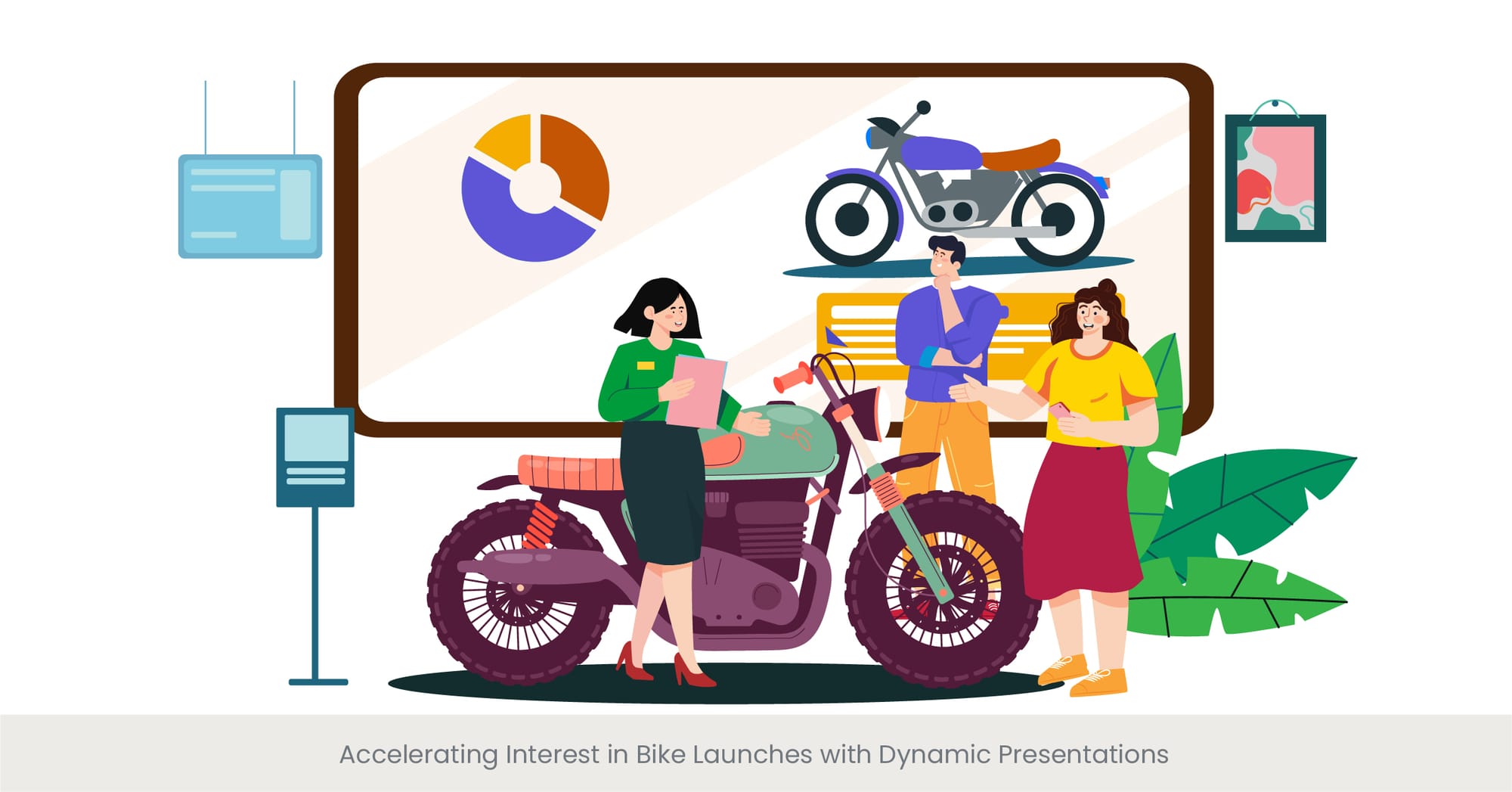

%20(1).jpg)
%20(1).jpg)


